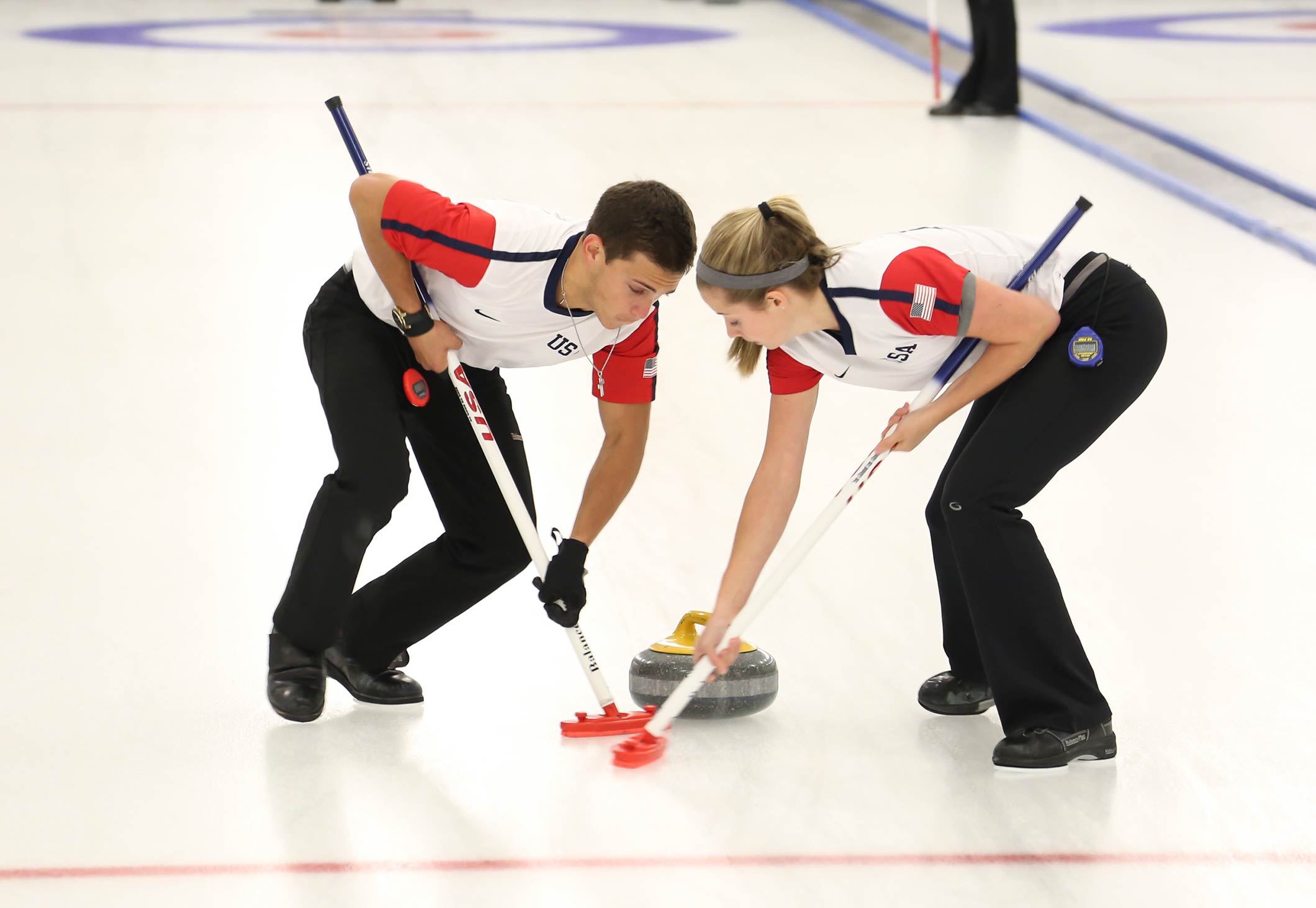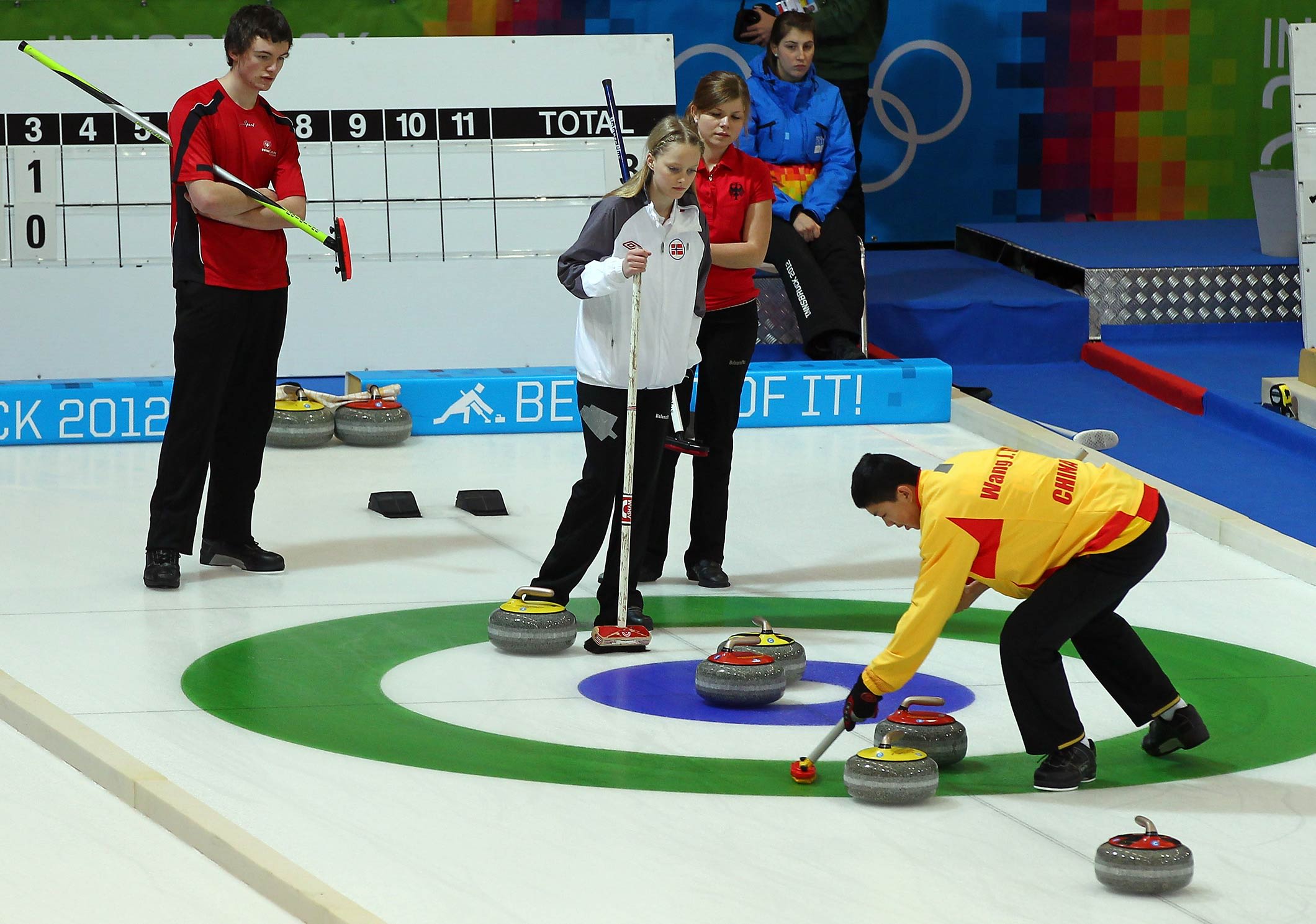Curling mixed doubles: faster and more fun!
On 8 June 2015 in Lausanne, the IOC Executive Board put the final touches to the programme for the Olympic Winter Games PyeongChang 2018. Several new events were added, including a mixed doubles curling competition. Like the mixed team event in Alpine skiing, Big Air in snowboarding and the mass start speed skating races, this new competition is in line with the reforms set out in the framework of Olympic Agenda 2020.
“Mixed doubles is a shorter event, and a totally different discipline to traditional curling,” explains World Curling Federation (WCF) President Kate Caithness. “In Rio in 2016, rugby sevens showed just how much condensed versions of well-known sports could generate new interest. The arrival of this discipline also means that, for the first time, curling will be on the Games schedule every day, which will give our sport unprecedented visibility.”
This also opens up the possibility of seeing unexpected winners. “Mixed doubles has allowed more modest or younger federations to reach the podium,” Caithness observes. “For example, we have had doubles champions from Hungary, the 2014 bronze medallists from Spain, and the 2010 runners-up from New Zealand.”

Faster and more fun
Mixed doubles has some notable features compared with traditional curling, where the teams consist of four players. It is played over eight ends instead of ten. The games are much faster. Each team has six stones rather than eight, and plays five per end. The player in a team who delivers the first stone of an end must also deliver the last one. That means he or she has the “hammer” (the advantage of playing the last stone). The other team member delivers the second, third and fourth stones. The player who delivers the first stone can be different for each end. Both players in a team have a broom, and the one who delivers then sweeps the ice ahead of his or her stone together with his or her team mate. In addition, the “thinking time” is reduced to a total of 22 minutes in mixed doubles.
At the start of an end, two stones are pre-placed on the ice, one for each team. They are both placed on the centre line, one in the central button of the “house”, the other on one of the three points between the house and the “hog line” (the line a stone has to cross to remain in play). The team which loses an end pre-places the two stones at the start of the next end. These cannot be touched, and no other stone can be placed, before the fourth stone has been delivered.
“Each delivery is more energetic, as there are fewer situations to save,” explains the young Canadian curler, Colin Hodgson, who with Reid Carruthers, a member of the men’s world curling championship-winning team in 2011, has taken up mixed doubles with compatriots Chelsea Carey and Joanne Courtney. Both of these pairs are on course to represent Canada in PyeongChang in 2018. “It’s very different from traditional curling, and we’re continuing to learn the various strategies. It’s a much more physical game. It’s funny to see all the skips in the changing rooms complaining about their aching muscles!”
A sixth world title for Switzerland in 2017
On 29 April 2017, the Swiss pair Jenny Perret and Martin Rios won the final of the World Championships held at Lethbridge in Canada, beating the local pair composed of Joanne Courtney and Reid Carruthers. The suspense was maintained until the very last stone: a mistake by Courtney on her last delivery, when Canada had been leading by three points at the start of the eighth and final end, offered a chance to Perret, who had the hammer, and her brilliant delivery gave Switzerland four points and a 6-5 victory. It also gave Switzerland its sixth title since the first World Championships in this discipline in 2008. Rios became world champion for the second time, after the 2012 edition he won with Nadine Lehmann. It was also the fifth time Switzerland had remained unbeaten at the World Championships, following on from Russia, which had beaten China in 2016. “I think our dreams came true,” said Rios. “Playing against Canada in a World Championship final in Canada and winning at the end is just incredible!”

The 2017 World Championships were also the qualifying event for the Olympic Games PyeongChang 2018. So the final of the pairs showed which NOCs had qualified for this discipline’s first appearance on the Olympic stage: Switzerland, Canada, China, Norway, Finland, Russia and the USA will thus join the Republic of Korea, which is automatically qualified as the host country, to compete for a medal at the curling centre in Gangneung next February. Joanne Courtney, silver medallist at the 2017 World Championships, summed it up perfectly: “We are proud of ourselves. We came here with a view to getting Canada to the Olympic Games, and that’s what we’ve done. We wanted a medal and we got it. We can be quite satisfied with that.”